Borja Sañudo Corrales, Moisés de Hoyo Lora, Inmaculada C. Martínez Díaz, Luís Carrasco Páez, Gabriela Ochiana
HEALTH RELATED QUALITY OF LIFE AND DEPRESSION IN WOMEN WITH FIBROMIALGIA SYNDROME: EFFECTS OF A LONG-TERM EXERCISE PROGRAM
Borut Fonda, Nejc Šarabon
INTER-MUSCULAR COORDINATION DURING UPHILL CYCLING IN A SEATED POSITION: A PILOT STUDY
Luís Carrasco Páez, Inmaculada C Martínez Díaz, Moisés de Hoyo Lora, Borja Sañudo Corrales, Nicolae Ochiana
ERGOMETRIC TESTING FOR TOP-LEVEL KAYAKERS: VALIDITY AND RELIABILITY OF A DISCONTINUOUS GRADED EXERCISE TEST
Jernej Rošker, Miloš Kalc, Nejc Šarabon
AN ATTEMPT TO OPTIMISE THE ACTIVE KNEE ANGLE TRACKING TEST WHILE USING A CYCLIC MOVEMENT PATTERN
Marina Mateos, Miquel Torregrosa and Jaume Cruz
EVALUATION OF A CAREER ASSISTANCE PROGRAMME FOR ELITE ATHLETES: SATISFACTION LEVELS AND EXPLORATION OF CAREER DECISION MAKING AND ATHLETIC-IDENTITY
Goran Vučković, Nic James
THE DISTANCE COVERED BY WINNING AND LOSING PLAYERS IN ELITE SQUASH MATCHES
Frane Erčulj, Mitja Bračič
DIFFERENCES BETWEEN VARIOUS TYPES OF ELITE YOUNG FEMALE BASKETBALL PLAYERS IN TERMS OF THEIR MORPHOLOGICAL CHARACTERISTICS
Julijan Malacko
THE CANONICAL RELATIONS BETWEEN THE SYSTEMS OF VARIABLES OF BASIC MOTOR AND COGNITIVE ABILITIES OF TOP FOOTBALLERS
Ivan Uher, Milena Pullmannová Švedová, Mirianna Brtková, Jan Junger
EFFECT OF A RESISTANCE TRAINING ON FUNCTIONAL FITNESS IN ELDERLY MEN
Saša Bubanj, Ratko Stanković, Saša Joksimović, Radoslav Bubanj, Stanimir Joksimović, Goran Kozomara, Pavlos Efthimiadis
KINEMATICS OF ACCURATE INSIDE OF FOOT KICK
Borja Sañudo Corrales, Moisés de Hoyo Lora, Inmaculada C. Martínez Díaz, Luís Carrasco Páez, Gabriela Ochiana
HEALTH RELATED QUALITY OF LIFE AND DEPRESSION IN WOMEN WITH FIBROMIALGIA SYNDROME: EFFECTS OF A LONG-TERM EXERCISE PROGRAM
This study aims to assess the effect of a program combined by aerobic, strengthening and flexibility exercises in patients with fibromyalgia (FM) in relation to health-related quality of life and psychological health status. Forty-two women with FM were randomly allocated to one of two groups: an experimental group that would conduct aerobic exercise, strength and flexibility exercises and a usual care control group, for 24 weeks. They were evaluated by using the Short-Form Health Survey (SF-36), and their psychological health status by using Beck Depression Inventory (BDI) for depression levels. Significant improvements were observed after the intervention for the combined exercise program in both quality of life (SF-36) and psychological health status (depression) and mainly in SF-36 mental health, physical function, body pain and vitality domains, while the control group patients even experienced a decrease in some of those variables such as body pain. These results confirm that a combination of aerobic exercise, strengthening and flexibility is beneficial to improving psychological health status in patients with FM. Therefore, this practice can be recommended to FM patients.
Keywords: fibromyalgia, exercise, depression, quality of life
Borut Fonda, Nejc Šarabon
INTER-MUSCULAR COORDINATION DURING UPHILL CYCLING IN A SEATED POSITION: A PILOT STUDY
The aim of this case study report was to outline the effects of uphill cycling on the muscle activity pattern and to practically test the methodological approach for the main study. The purpose was to observe the differences in the electromyographic (EMG) activity of eight leg muscles while a subject was cycling under three laboratory conditions: cycling on a level surface, cycling on a 10% incline , and cycling on a 20% incline. A quantitative evaluation of the EMG signals was carried out using (i) the timing of the muscles on-off activity with the 10% of MVC set as a threshold and (ii) calculating the differences between the activations of the same muscle under the three cycling conditions. In both cases, the muscles’ activation pattern was observed in the context of the crank-angle position. Preliminary observations suggest that the incline affects the inter- and intra-muscular coordination pattern with greatest modulation in two joint muscles of the thigh. The measurement tool, used to evaluate the differences in timing and amplitude, was found to be a promising evaluation approach and will be used in the main study.
Keywords: cycling, EMG, incline
Luís Carrasco Páez, Inmaculada C Martínez Díaz, Moisés de Hoyo Lora, Borja Sañudo Corrales, Nicolae Ochiana
ERGOMETRIC TESTING FOR TOP-LEVEL KAYAKERS: VALIDITY AND RELIABILITY OF A DISCONTINUOUS GRADED EXERCISE TEST
The aim of this study was to determine the validity and reliability of a graded exercise test on a specific kayak ergometer (Dansprint®) in which certain physiological and technical parameters that can to define kayaking performance were assessed. Fourteen male top-level kayak paddlers (all members of the Spanish National Kayaking Team) participated in this investigation. All subjects carried out two ergometric tests (Ergo1 and Ergo2) and one flat water test (FWT) in random order. At anaerobic threshold (AnT) intensity, the results showed acceptable levels of reliability (comparison between data of Ergo1 and Ergo2 tests) in the assessment of velocity (r=0.784; p=0.004), stroke frequency (r=0.976; p<0.001), heart rate (r=0.964; p<0.001), and blood lactic acid concentration (r=0.899; p<0.001). Validity coefficients showed a strong relationships between Ergo2 and FWT tests in all physiological and technical parameters with the exception of velocity (r=0.498; p=0.121). It can be concluded that specific ergometry can be used to evaluate and to prescribe training AnT intensities of top-level kayakers, regarding parameters such us heart rate, whole blood lactic acid concentration, and stroke frequency. Nevertheless, the training prescription through specific ergometry must be taken cautiously when velocity is the parameter of reference.
Keywords: kayaking, testing, ergometry
Jernej Rošker, Miloš Kalc, Nejc Šarabon
AN ATTEMPT TO OPTIMISE THE ACTIVE KNEE ANGLE TRACKING TEST WHILE USING A CYCLIC MOVEMENT PATTERN
Voluntary angle tracking methods are used as training and diagnostic procedures for improving or analysing the performance of the sensory-motor system. Despite their wide application, only a few existing studies examine the repeatability of active tracking methods. Our study tested intra- and inter-visit repeatability and the sensitivity of parameters. We carried out measurements on 30 subjects on three non-subsequent days. At the first visit, we examined intra-visit repeatability and reliability by measuring different forms of reference signals (sine, triangle and trapezoid). During the remaining two visits, the subjects only carried out one instance of the test to check for inter-visit repeatability. The results indicate a poorer inter-visit (ICC<0.8) and medium-high intra-visit repeatability (ICC>0.8). Differences between various forms of the reference signal statistically differ significantly among themselves (p<0.05). Active tracking methods have been shown to have medium intra-visit repeatability and poor inter-visit repeatability. In the future, it would be beneficial to examine the protocols to improve the inter-visit repeatability.
Keywords: motor control, diagnostics, repeatability, joint angle, tracking, feedback
Marina Mateos, Miquel Torregrosa and Jaume Cruz
EVALUATION OF A CAREER ASSISTANCE PROGRAMME FOR ELITE ATHLETES: SATISFACTION LEVELS AND EXPLORATION OF CAREER DECISION MAKING AND ATHLETIC-IDENTITY
This aim of this study was to evaluate a career assistance programme for elite athletes. This was achieved by assessing satisfaction levels, as well as by examining the variables of athletic identity and career-related difficulties. Thirty-five athletes completed three measures: a survey to assess the programme, the Career Decision-making Difficulties Questionnaire and the Athletic Identity Measurement Scale. The evaluation of the programme was positive, as satisfaction levels were high, and the level of career decision-making difficulties tended to be reduced in relation to the amount of time spent in the programme. Participants showed difficulties in three aspects of career decision-making: indecisiveness, dysfunctional beliefs and lack of information in the career decision-making process. This suggests that athletes may not feel as confident with their choices as first thought; this is something the programme needs to address. There were differences in difficulties related to career decision-making between groups of athletes that had been involved in the programme for different lengths of time. Athletic identity was shown to be related to dysfunctional beliefs; however, athletic identity did not correlate with global levels of career decision-making difficulties. Further research evaluating similar programmes is warranted in order to assess how effective career assistance programmes are, as well as clarifying the role that dysfunctional beliefs play in the context of career decision making for elite athletes.
Keywords: sport career, career assistance programme, transition, satisfaction, athletic identity, decision-making process
Goran Vučković, Nic James
THE DISTANCE COVERED BY WINNING AND LOSING PLAYERS IN ELITE SQUASH MATCHES
The aim of this research was to analyse players’ motions in elite squash matches and to establish whether or not there were differences in the distance covered between winners and losers of individual rallies. An automated player-tracking system, with operator supervision and intervention, captured players’ movements during matches at the World Team Championships (N=11). All rallies (n = 1429) were analyzed, except when a ‘let’ decision was made by the referee (n = 307). All rallies were sorted into four different time-related categories: very short, short, medium and long rallies. On average, the winners of rallies covered 0.71m less than the losers. However, in 41.4% of cases, the loser of the rally covered less distance than the winner of the rally. This result suggests that a player who forces an opponent to cover a greater distance is not guaranteed to win the rally. A general explanation for this finding is that whilst a player may dominate a rally and cause the opponent to cover a greater distance, an error by the dominant player, or a good move by the player under pressure, would result in the rally winner having covered a greater distance. Consequently, further analyses are needed to examine whether any link exists between shot selection and their outcome and the distance covered.
Keywords: squash, motion analysis, rally, winners, losers, differences
Frane Erčulj, Mitja Bračič
DIFFERENCES BETWEEN VARIOUS TYPES OF ELITE YOUNG FEMALE BASKETBALL PLAYERS IN TERMS OF THEIR MORPHOLOGICAL CHARACTERISTICS
Morphological characteristics are an important factor of efficiency in basketball. This study aimed to establish and analyse the morphological characteristics of elite young European female basketball players. We were also interested in the development level of the morphological characteristics of various types of players and the differences amongst them. The study sample consisted of 68 basketball players with an average age of 14.58 years. They were divided into three groups according to their playing position: guards (n = 31), forwards (n = 20) and centres (n = 17). In the study, a battery of 23 morphological measures served as a basis for calculating somatotypes, percentages of fat, muscle and bone mass, and some other morphological indexes.
The study established significant differences between individual types of young female players in terms of their body height, body weight, all three somatotypes (ectomorphic, endomorphic and mesomorphic) and the percentage of muscle tissue. After eliminating the effect of body height, statistically significant differences were observed in the percentage of bone tissue, whereas the differences in the percentage of muscle tissue were no longer statistically significant. It is also interesting that no differences were established between the individual types of players in terms of the percentage of fat tissue.
Keywords: basketball, women, anthropometry, playing positions
Julijan Malacko
THE CANONICAL RELATIONS BETWEEN THE SYSTEMS OF VARIABLES OF BASIC MOTOR AND COGNITIVE ABILITIES OF TOP FOOTBALLERS
A system of 12 variables (9 motor and 3 cognitive variables) was applied to a sample of 136 footballers, aged between 18 and 27, with the aim of determining significant relations between the systems of basic motor variables and the system of cognitive variables. The data is processed with a canonical correlation analysis. The application of the Bartlett chi-square between the system of basic motor variables and the system of cognitive variables produced a significant canonical correlation. The relations between the first canonical factor from the system of cognitive variables (interpreted as a general cognitive factor), and the first canonical factor from the system of basic motor variables (interpreted as a canonical factor of structuring the movement, regulation of intensity and duration of excitation) show that footballers have good results in basic motor abilities if they have increased values in cognitive abilities and vice versa. The results of the research have shown that footballers achieve better results in basic motor variables of structuring the movement and regulation of intensity, if they have increased values in cognitive variables of efficiency of perceptive processor, efficiency of serial processor and efficiency of parallel processor. Therefore, it can be concluded that cognitive mechanisms generally influence the successful performance of basic motor abilities of footballers where the impact of the efficiency test of the serial processor is the most important, because it is responsible for the ability to operate with symbols, especially in case of structuring movement, which is the ability regarded as the most dominant in footballers.
Keywords: footballers, motor abilities, cognitive abilities, relations
Ivan Uher, Milena Pullmannová Švedová, Mirianna Brtková, Jan Junger
EFFECT OF A RESISTANCE TRAINING ON FUNCTIONAL FITNESS IN ELDERLY MEN
This study determined the effectiveness of a three-month program of regular exercises for the improvement of the functional performance of elderly men. The 30 subjects, aged 65–69, who took part in this trial were assigned either to an exercise group or a control group. The following variables were measured with the Senior Fitness Test (SFT test): muscular strength of lower and upper body, aerobic endurance, flexibility of lower and upper body, agility/dynamic balance and body-mass index. In the exercise group, 15 subjects completed the training program to the end of the trial; they showed significant performance improvement in lower and upper body muscular strength, aerobic endurance, agility/dynamic balance, but minimal or no significant performance improvement in lower and upper body flexibility, while the control subjects showed minimal or no improvement in all SFT subtests.
Keywords: senior fitness test, elderly, functional performance, strength
Saša Bubanj, Ratko Stanković, Saša Joksimović, Radoslav Bubanj, Stanimir Joksimović, Goran Kozomara, Pavlos Efthimiadis
KINEMATICS OF ACCURATE INSIDE OF FOOT KICK
The aims of this research were to quantify the range in values of examined kinematic variables and the existence of statistically significant differences in values of the kinematic variables in accurate attempts of soccer kicks inside the foot, subsequent to approach abreast, within an angle of 0 degree and angled approaches, within angles of 30 and 60 degrees. The sample of subjects consisted of 20 professional soccer players of F.C. ‘Radnički’ from Niš, Serbia. A high-speed camera operating at 300 Hz was used to record the inside-foot kicking technique, in a horizontal plane. One-way ANOVA showed significant differences in the values of all examined variables, with the exception of the linear velocity of the ball after the kick and the duration of foot-ball contact. There are certain ranges in the values of the examined variables within which the accuracy was achieved. Also, although the angle of attack of the swing foot significantly differed compared to angle of approach of soccer player (0, 30 and 60 degrees), subjects automatically set their swing foot in almost a similar position before the kick, and hit the target.
Keywords: biomechanics analysis, soccer, angle of approach, differences






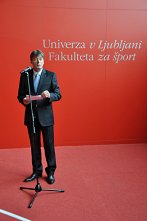









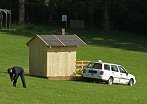
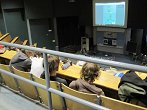





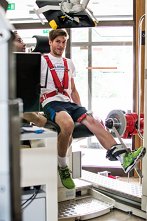
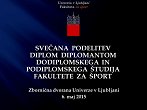

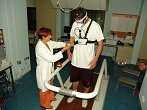

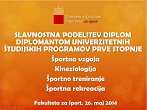






.png)